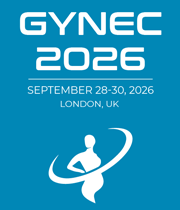Breech Presentation
Breech presentation is a type of fetal malposition in which the baby is positioned in the uterus with its buttocks or feet down rather than its head down. This is the most common malposition of the fetus and occurs in approximately 3-4% of all births. Breech presentation is a risk factor for preterm delivery and is associated with increased perinatal morbidity and mortality. It can lead to an increased risk of cephalopelvic disproportion, uterine rupture, cord prolapse, and stillbirth. Women with breech presentation are more likely to have operative deliveries, either by cesarean or vacuum extraction. There are several methods used to try to resolve breech presentation, including external cephalic version (ECV) and moxibustion. ECV is a procedure in which the fetal position is changed from breech to cephalic, or head down, by pushing and rotating the fetus manually. Moxibustion is a traditional Chinese medicine technique involving the burning of mugwort near the toes of pregnant women with breech presentation. When a baby is in breech presentation, it is important to identify the risk factors and monitor the pregnancy closely. If the fetus is in a breech position at term, an obstetrician should discuss the risks and benefits of ECV or moxibustion with the mother. If these methods fail, a cesarean delivery is usually recommended.

Neda Zarrin-Khameh
Baylor College of Medicine, United States
Marlen Sulamanidze
Total Charm Clinic, Georgia
Mohamed M Hosni
London North West University Healthcare NHS Trust, United Kingdom
Neda Zarrin-Khameh
Baylor College of Medicine, United States
Marlen Sulamanidze
Total Charm Clinic, Georgia
Mohamed M Hosni
London North West University Healthcare NHS Trust, United Kingdom




Title : Evaluate the changes in SP-D levels in plasma during different phases of the menstrual cycle recruited from the Well- Adult Surfactant Protein Study (WASP)
Natnicha Kitti udom, University College London, Thailand
Title : Synergistic antifibrotic potential of protocatechuic acid and D-Carvone in liver protection
Ling Yin, Hefei Comprehensive National Science Center, China
Title : Pathologic findings in women with atypical glandular cells on Pap test
Neda Zarrin-Khameh, Baylor College of Medicine, United States
Title : Non-ablative radiofrequency for pelvic floor dysfunction and female intimate anti-aging: a 6-month prospective multi-centre cohort objectiv
Shaadaiti Wufuer, First Affiliated Hospital of Xinjiang Medical University, China
Title : Benign gynecological conditions and lifetime contraceptive patterns: a population-based analysis of the 2022–2023 national survey of family growth
Mayi Gnofam, Stony Brook University, United States
Title : Hysteroscopic endometrial resection with resectoscope versus Novasure ablation: A look at patient satisfaction with treatment of abnormal uterine bleeding and rates of progression to hysterectomy
Genevieve Kan, West Gippsland Healthcare Group, Australia